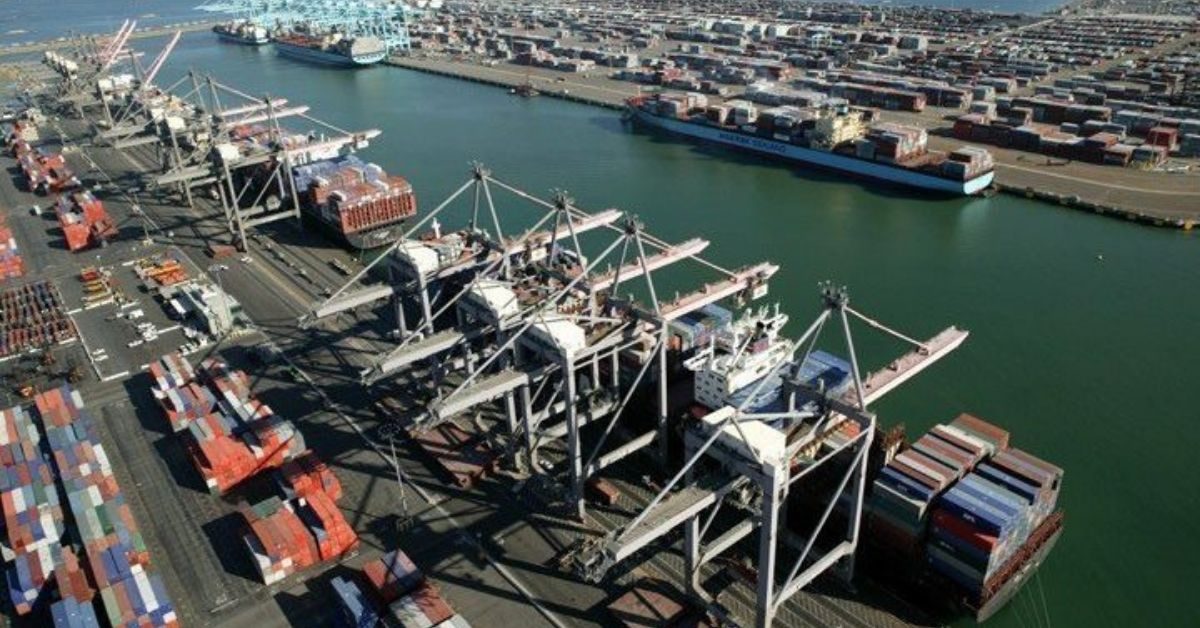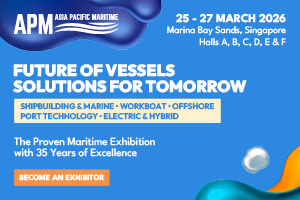As supply-chain woes have wreaked havoc on the global economy, one chokepoint in particular has stood out: America’s woefully inefficient ports.
Ships idling off the coast, waiting to offload goods, have become an icon of paralysis. At one point last week, about 200,000 containers were stranded aboard anchored vessels outside the Port of Los Angeles. East Coast seaports have seen similar lags. Such delays impose serious costs: Retailers face shortages, manufacturers have slowed production, goods have spoiled, and exporters have lost customers. Experts expect the crunch to last for months.
To be clear, port congestion isn’t the whole story. As the pandemic ebbed, consumer demand for goods soared. Imports surged and warehouses filled up. Labor shortages put trucking and rail networks under stress. Disruptions to the flow of critical components — such as truck chassis and shipping containers — clogged cargo facilities. As bottlenecks proliferated throughout the economy, ports bore the brunt.
Even so, U.S. ports have exhibited glaring shortcomings for years. Not one cracked the top 50 in last year’s Container Port Performance Index, which compares efficiency at 351 sites around the world. Moving a container off a large ship in L.A. takes twice as long as it does in Shanghai. And while Asian ports generally run 24/7 (or 168 hours a week), many in the U.S. run just 112 hours a week, with nights and weekends off.
Why is this?
A crucial factor has been organized labor. Unions representing longshoremen have been remarkably effective in advancing their members’ interests — gains that have come at the expense of other workers and the general public. (The average wage is $182,000 a year for dockworkers at West Coast ports, much more for foremen, leading terminal operators to limit hours to avoid overtime.) Fearful that jobs might disappear or migrate to offices from the docks, unions have also resisted the kind of automation that is standard overseas. The result was serious turnaround delays even before the recent swell of pressure on capacity.
Automation won’t make sense at every port, but its potential benefits are plain. It could make shipping goods faster, safer, greener and cheaper. It could ease congestion, boost economic growth and reduce consumer prices. A study by McKinsey & Co. found that, done prudently, automating ports could slash operating costs by up to 55% and boost productivity by up to 35%. Yes, some workers will be displaced. But if history is any guide, better technology will expand the total number of jobs that ports create long-term.
One might think that a historic supply-chain disruption would prod policy makers to take up this cause, but there’s little sign of it. In this area, as in others, President Joe Biden has shown greater concern for union labor than for the wider public. His plan to get West Coast ports running 24/7, which he hailed as a potential “game changer,” was in fact a small-time pilot program that had nothing to do with technology; the ports involved simply agreed to pay more overtime. One provision in the
infrastructure bill Congress is debating would offer $3.5 billion to invest in zero-emissions technology at ports. It specifically prohibits investment in automation. This is a head-scratcher: government throwing its weight behind antiquated procedures when the benefits of technological innovation are so plainly manifest across all of society — from vaccines to batteries to reusable rockets and beyond.
In fact, such reluctance could hardly be more shortsighted. Even after the current crisis subsides, the shipping trade is expected to continue growing for decades. By 2040, according to a forecast commissioned by the ports of Los Angeles and Long Beach, regional container traffic could reach 41.1 million 20-foot equivalent units, up from 17.3 TEU at the complex last year.
State and federal policy makers should take this year’s epic bottlenecks as a warning sign. Investment in automation should be one priority. Ports could also use help standardizing the oceans of data they collect and sharing it with other actors in the supply chain. Retraining programs — which unions have in the past been amenable to — could help dock workers transition to high-level logistics work. And standard-issue infrastructure projects, such as improving connections to rail and road networks networks, will be essential in the years ahead.
None of that will be cheap. It will be even more expensive if the Biden administration continues to prioritize union labor over workers and consumers at large. That needs to change — but if it does, few investments would offer as much potential to grow the nation’s economy.
Source : Economic Times









